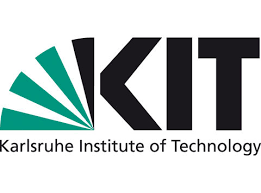New Plant Network At Karlsruhe Institute Of Technology Produces Carbon From Air
Extracting the greenhouse gas CO 2 from the atmosphere and converting it into stable carbon through combined processes – this is what a new plant network at the Karlsruhe Institute of Technology (KIT) has been doing on a test scale since this month. The process, developed in the NECOC research project together with industrial partners, combines negative emissions with the production of a high-tech raw material. Now it is to be energetically optimized and scaled. The Federal Ministry of Economics and Climate Protection is funding with 1.5 million euros.
Germany is on the way to climate neutrality – and to do this it has to close carbon cycles in industry as quickly as possible. In order to reach the 1.5 degree target at the same time, according to the recommendations of the Intergovernmental Panel on Climate Change (IPCC), already emitted CO 2removed from the atmosphere and stored permanently. “In order for industrial production to remain possible, we have to break new technological ground,” says Dr. Benjamin Dietrich from the Institute for Thermal Process Engineering (TVT) of the KIT. “This also applies to the provision of carbon in industry. This is required in the production of batteries, in the paint industry, in the agricultural sector or in the manufacture of building materials. So far, it has mostly come from fossil sources.” In the research project NECOC (stands for: NEgative CarbOn dioxide to Carbon ), which Dietrich is coordinating, the partners KIT, INERATEC and Climeworks are developing a process with which CO 2from the atmosphere can be processed into carbon. “If this then remains bound in the long term, we combine negative emissions with a component of the post-fossil raw material supply in the sense of a future carbon management strategy. This is a double contribution to a more sustainable future,” says Dietrich. In the first phase of the project, the research team set up a test facility on a container scale, which has now gone into operation. In continuous operation, this first expansion stage removes almost two kilograms of CO 2 from the ambient air every day and uses it to produce 0.5 kilograms of solid carbon.
In three steps from greenhouse gas to resource
The NECOC process combines three process steps: In the first step, the CO 2 is separated from the ambient air with the aid of an adsorber ( Direct Air Capture ). In the second step, it is reacted in a microstructured reactor with renewably produced hydrogen from a connected electrolyser. The components carbon and oxygen form new bonds, from the CO 2now becomes methane and water. The water flows back into the electrolyser, the methane with its carbon component continues to flow into a reactor with liquid tin. In the third step of the process, the pyrolysis reaction takes place in rising bubbles and the methane molecules are split. This produces hydrogen, which is used again to separate CO 2 in the process. What remains is carbon, which floats on the tin as a microgranular powder and is continuously separated mechanically. By changing process parameters such as the temperature level, different carbon modifications such as graphite, carbon black or even graphene can be produced.
Optimize and scale for industrial use
With the start of the test facility, the NECOC project has reached an important milestone and the end of the first funding phase. In a second project phase, the NECOC process is now to be scaled and optimized for an extended expansion stage. “We want to make the process even more energy-efficient by improving the recovery of process heat,” says project manager Dr. Leonid Stoppel from the Karlsruhe Liquid Metal Laboratory KALLA. “We are also looking at the integration of high-temperature heat storage and the direct integration of solar heat . ” the carbon quality can be examined.

